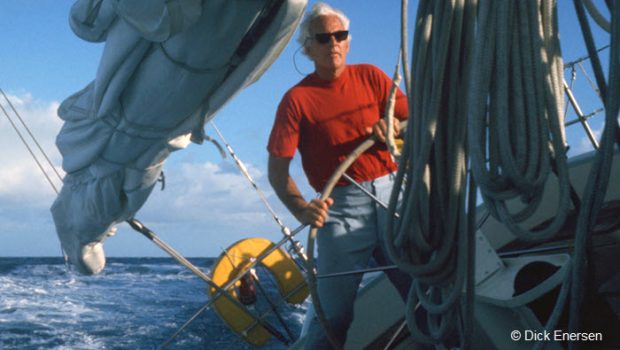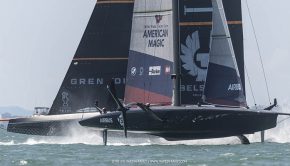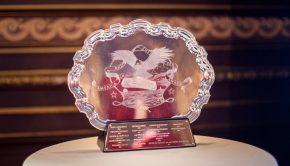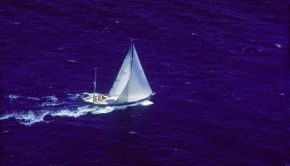Transformative period in yacht racing
Published on February 10th, 2021
The Mystic Seaport Museum (Mystic, CT) has accepted the donation of a significant collection of 20th century yachting materials related to the renowned sailor John B. “Jim” Kilroy Sr. and his yachts named Kialoa. This donation was made by Kilroy’s daughter Patrice Kilroy, who wished that the story of her father and those who sailed with him would be preserved and shared with future generations.
The materials contained in the collection include personal correspondence, design memoranda, drawings, ratings protocols, race notes, planning items, logbooks, annotated charts, photos, scrapbook clippings, movies, plaques, trophies and other materials which document 50 years of American yachting at the highest levels of competition.
“Jim Kilroy and the Kialoas were synonymous with big boat sailing during a transformative time in the sport,” said Museum trustee Sheila McCurdy. “The best amateur sailors aspired to crew for Kilroy. Many of his crew went on to impact sailing in their own rights. Mystic Seaport Museum is the perfect place to keep the Kilroy-Kialoa Collection safe and accessible for marine historians and generations of sailors to come.”
From 1956 to 2005, Kilroy owned and raced five Maxi boats carrying the name Kialoa, achieving exceptional success on every ocean of the world. In 1975 alone, they won 11 major ocean races, including the Transatlantic, Fastnet, and Sydney-to-Hobart Races.
The Hobart win in 1975 set a record time that stood for 21 years despite the advances in materials and technology that transpired during those decades. Kialoa IV won 20 out of 24 races in 1981 and held the Maxi Yacht World Champion title for five years between 1981 and 1987.
This collection is important not simply because it documents the success of the Kialoa campaigns, but because Kilroy and the Kialoa boats were at the forefront of many advances in yacht design, construction, crewing, and technology. An early Kialoa was one of the first racing yachts built of aluminum, and Kialoa IV was an early example of the use of carbon composites and Kevlar.
Kilroy famously used computers to aid in planning, analyzing and measuring success, and his early adoption of onboard computer data collection and use of computers to assist in tactical decision-making was at the forefront of what has now become the industry standard. Kilroy was inducted into the National Sailing Hall of Fame in 2014. He passed away in 2016.
Mystic Seaport Museum now begins the task of cataloguing and digitizing this collection so that it can be shared with researchers, scholars, and enthusiasts alike to reflect the transition toward the modern era of yacht racing.
Photo: Jim Kilroy steering Kialoa III.
Editor’s note: We found in Kilroy’s book, Kialoa – Dare to Win, the team had in the 1975 Transatlantic Race been first to finish, first in class, but second overall. However, the overall result also included an asterisk which stated, “Kialoa III would have been 1st overall if correct handicap distance had been applied.”









 We’ll keep your information safe.
We’ll keep your information safe.